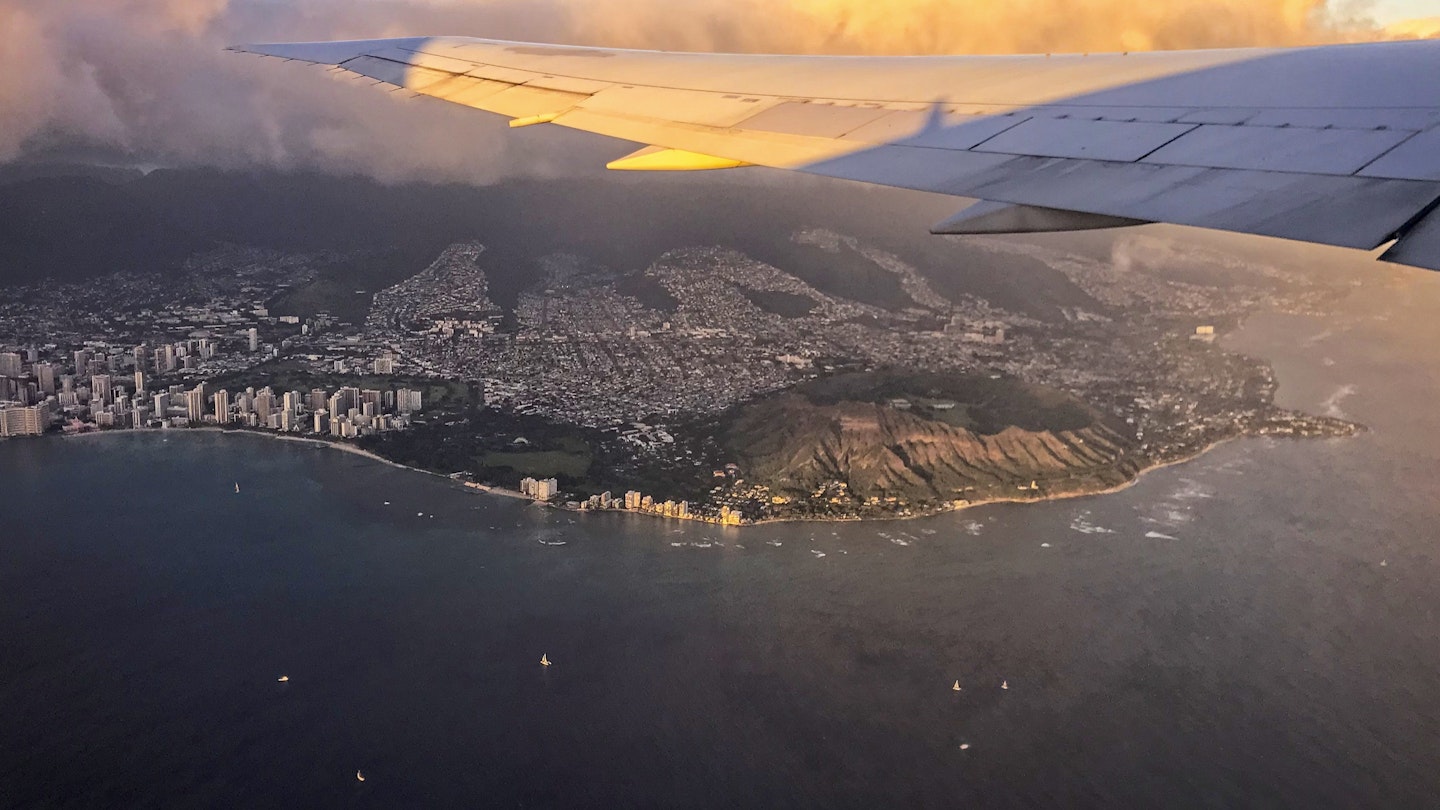Comparing Southwest Airlines and Hawaiian Airlines for Flights to Hawaii
The only mistake I made after arriving at the San Jose airport for a five-hour flight to Honolulu on Southwest Airlines was not buying food to take on board.
I knew Southwest, a low-cost carrier that began flying between California and Hawaii in 2019, only serves light snacks. Moreover, I learned the hard way that this policy also applies when crossing the Pacific.
“For those up here in first class, we’ll be serving steak and lobster,” Rocco, the lead flight attendant, announced over the PA. “For dessert, we have a delicious key lime pie.”
People in economy class, he added, would be served Spam and M&Ms. On this single-class-of-service airline, everyone realized he was joking. The galleys contained no food.
The smart passengers laughed along as they pulled bags full of sandwiches and munchies from under their seats. Consequently, flight attendants distributed modest snack packs containing crackers, cheddar cheese spread, pretzels, and a bag of “island fruit” chews.
After that limited offering, and with no further food for sale, some slabs of Spam actually sounded good. It was going to be a long five-hour trek.
Competition Heating Up
Southwest has legions of loyal customers who willingly forego assigned seats in exchange for friendly and efficient service, low prices, and perks such as two free checked bags per person. However, as it increases the number of flights between the West Coast and Hawaii, Southwest is facing formidable competition from Hawaiian Airlines, another airline boasting a cadre of faithful fans and a decades-long history of linking America’s 50th state with the Lower 48.
In an effort to cater to budget-minded fliers, Hawaiian introduced “Main Cabin Basic” last October. Tickets cost $120 less per person, round-trip, than regular “Main Cabin.”
To compare the two airlines, I flew Southwest to Honolulu, returning a few days later on Hawaiian. Therefore, when you’re trying to decide which ticket to buy, there’s much more to consider than just price.
Your Seats and Tray Tables
As far as seats go, it’s pretty much a toss-up. Southwest flies newer Boeing 737-800s that, according to SeatGuru, have 17-inch-wide seats with a pitch of 32 to 33 inches and adjustable headrests.
Hawaiian’s Airbus A330-200s provide seat widths of 16.5 to 18 inches in economy, with a 31-inch pitch. On both airlines, there’s ample room for even larger passengers to lower the tray table.
It is important to note that Hawaiian’s “Basic” service customers aren’t assigned seats until they arrive at the airport and families traveling together may not get seats beside one another. Furthermore, “Basic” passengers are the last to board, which means finding space in the overhead bins may be a challenge.
Interminable Terminals
Upon landing in Honolulu, I was hungry, so my first priority was finding a food stall. That was quite a hike since Southwest uses Gates G7 through G10 in a remote part of Daniel K. Inouye International Airport. In a throwback to a much-earlier era, there are no jetways at these gates; passengers deplane and board using ramps exposed to the weather.
One plus for Southwest: their inter-island flights – serving the four most-visited islands: O‘ahu, Maui, Hawai‘i, and Kauai – all depart from these same gates in Terminal G. Conversely, transferring from mainland to inter-island flights on Hawaiian necessitates either a long walk or a ride on the airport’s Wiki Wiki shuttle bus.
It was raining as I waited to board an inter-island flight on Southwest. A gate agent announced that they didn’t have any umbrellas, but could provide plastic bags for anyone wanting to protect their belongings from the rain. By the time I walked across the tarmac to the plane, it was only sprinkling; however, had it been a downpour, I would have been soaked.
Hawaiian Food Service Not Much Better
My Hawaiian flight to Las Vegas was uneventful, despite a change of planes in Honolulu that resulted in a 90-minute delay. The complimentary hot meal regularly touted by the airline consisted of a meager, bland teriyaki chicken sandwich and a packet of potato chips.
Prior to the dinner service, flight attendants came through the cabin with carts filled with snacks and bottled water, all for sale. I should have stocked up.
About an hour before landing, we were served a free glass of rum punch along with two cookies.
The Bottom Line: Price
How much can you expect to pay for flights to and from Hawaii on these airlines? That depends on how flexible you’re willing to be on travel dates, particularly on Southwest.
Both airlines’ websites offer month-by-month fare calendars that compare prices by date. I priced nonstop flights between San Jose and Honolulu, discovering roundtrip rates on Southwest as low as $332. In contrast, on Hawaiian, the cheapest was $556.
Of course, prices often change daily. One advantage Southwest provides is the ability to change to a lower-priced ticket – should you find one – without incurring the typical fee. Your savings are then “banked” for one year for use on another flight.
If you save a few dollars, be sure to avoid my oversight – invest it in some food to take on board.




